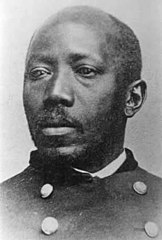The North Star was one of the most well know abolitionist papers of its era. Edited by Frederick Douglass, and briefly co-edited by M.R. Delaney, it served as a major mouthpiece for the anti-slavery movement. The paper called for an end to the oppression of Black Americans in the United States, and used the language of the Declaration of Independence and other sources to argue that equality was an important but unfulfilled part of the American political tradition that began with the Revolution.1

Frederick Douglass is a central figure in the history of the United States. His crusades against slavery and for the equality of Black Americans in the United States are well known, and his speeches and writings continue to be celebrated as foundational texts for understanding the experiences and traumas of being black in America. Often though, these famous speeches and writings have overshadowed Douglass’ other work as an activist. Douglass was an active newspaper editor between 1847-1860 and 1870-1874, working with three different historical newspapers: The North Star, Frederick Douglass’ Paper, and The New National Era.2 The North Star was published by Frederick Douglass in Rochester, New York between 1847 and 1851 and eventually merged with another newspaper to become Frederick Douglass’ Paper. After his first stint in publishing ended in 1860, Douglass assisted with recruiting for the United States Colored Troops.3 After the Civil War, he continued to push for equality for people of color in the United States.

Originally Douglass served as co-editor of The North Star alongside Martin R. Delany. Martin R. Delany worked to author reports for the paper and generate subscribers. By 1850 however, Douglass had taken over as the sole editor of the paper.4 Much like Douglass, Delany would maintain an active role in activism throughout his life. Delany became active in black nationalism and movement for Black Americans to return to Africa, which put him in contest with Douglass in the 1850s.5 With the beginning of the Civil War, Delany encouraged recruiting for the United States Colored Troops. Delany would go on to be commissioned as a Major in the Union Army, the first Black American to hold a field grade officer ranking in the US Army.6
- “Meeting at Columbus”, The North Star, March 23, 1849, p. 1.
- Library of Congress, “About This Collection,” Frederick Douglass Newspaper, 1847-1874. https://www.loc.gov/collections/frederick-douglass-newspapers/about-this-collection/.
- Library of Congress“Timeline | Articles and Essays” Frederick Douglass Newspapers, 1847-1874, https://www.loc.gov/collections/frederick-douglass-newspapers/articles-and-essays/timeline/.
- The North Star, July 6, 1849 is the first issue where Douglass served as the sole editor.
- Robert S. Levine, Martin R. Delany: A Documentary Reader (Chapel Hill: The University of North Carolina Press, 2003), 1.
- Levine, Martin R. Delany, 2.